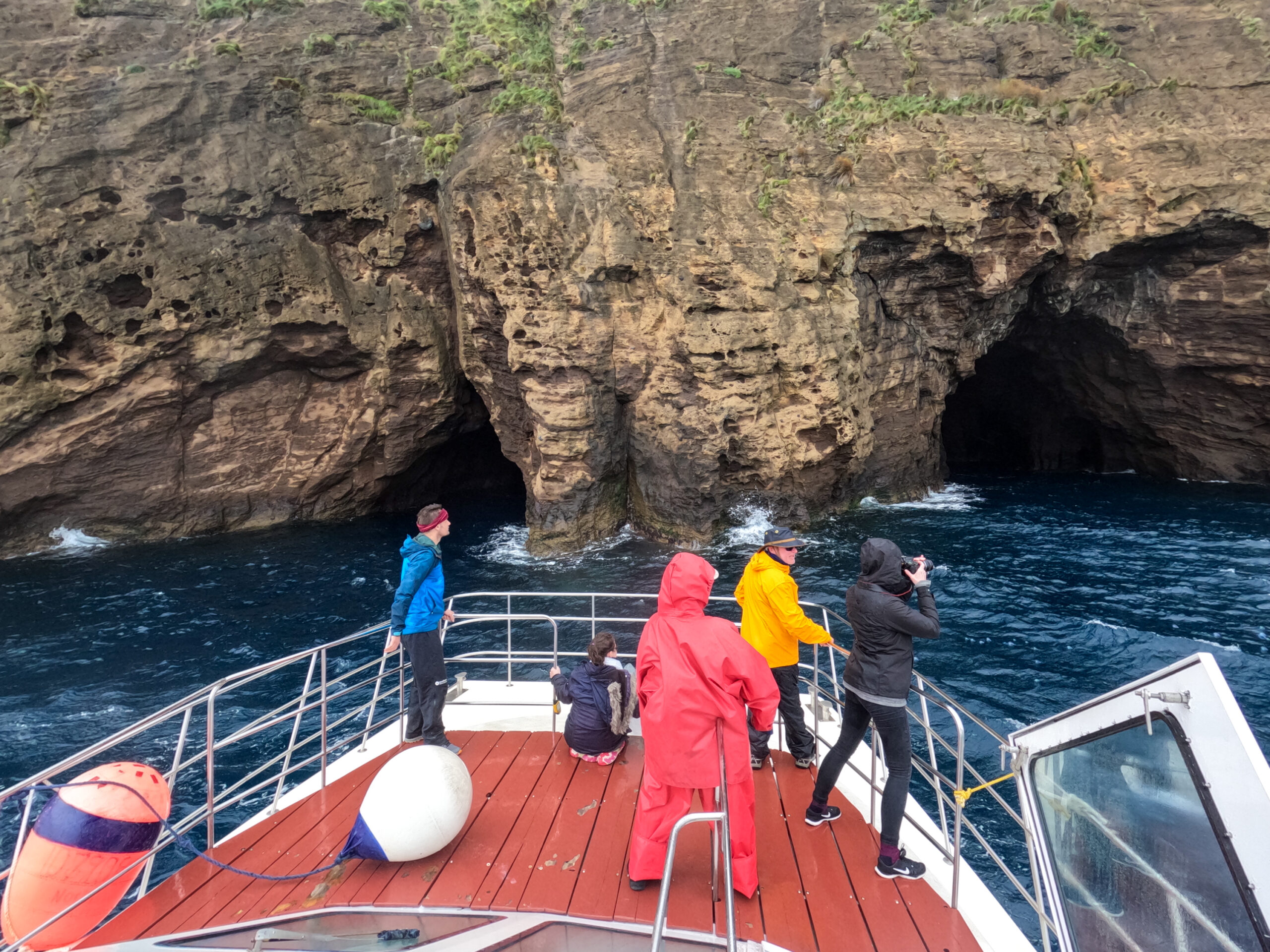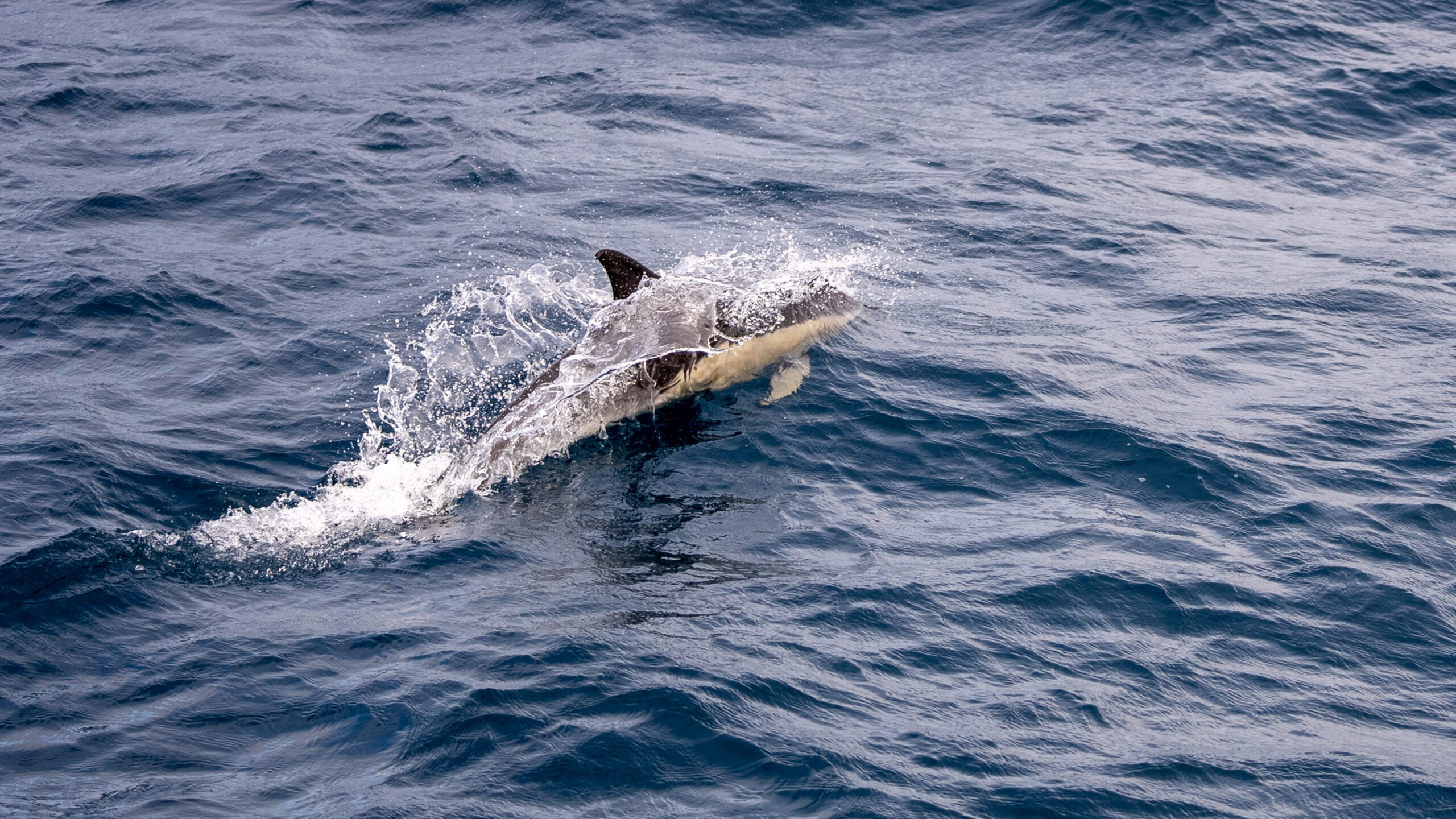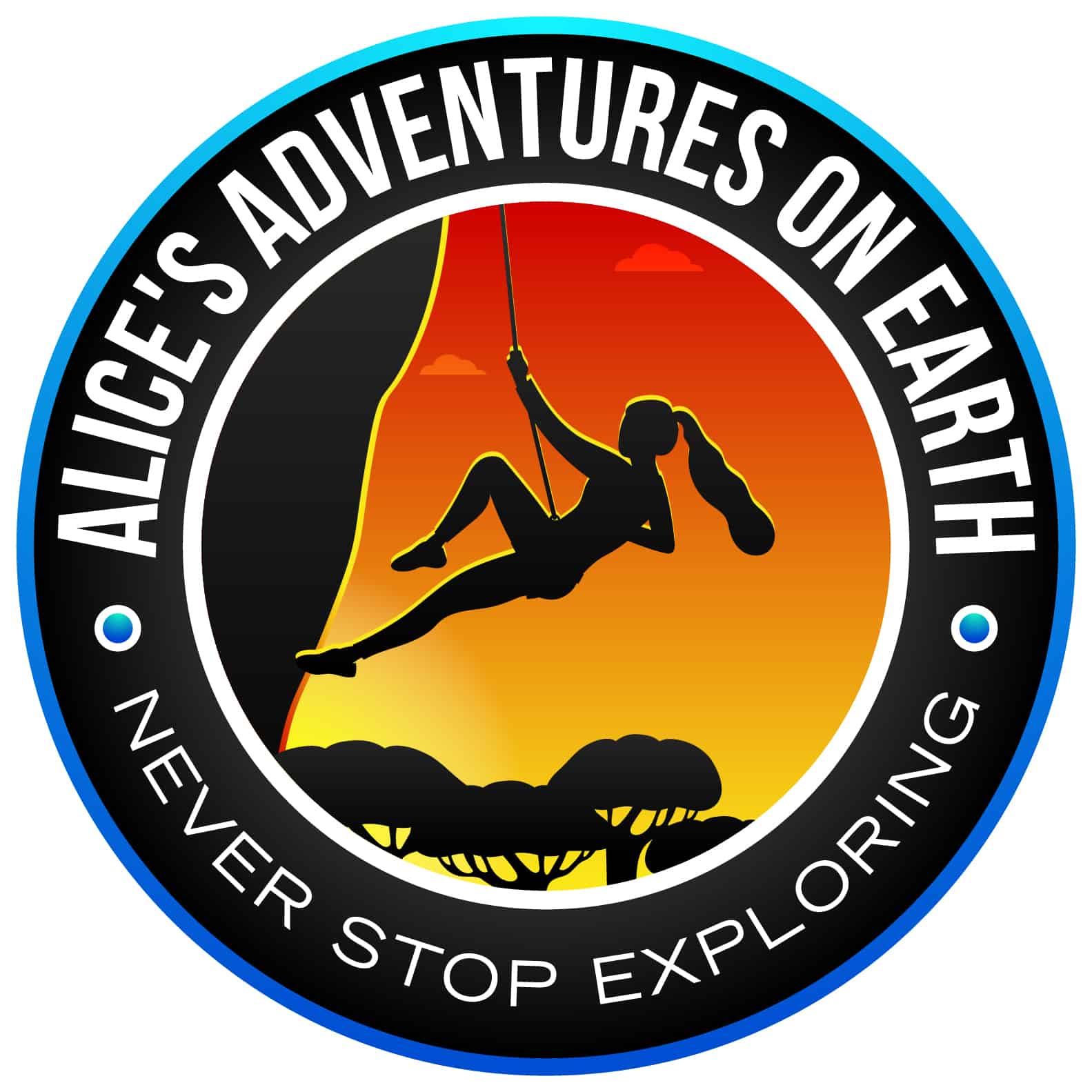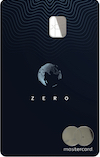A Conservation Whale Trip with Biosphere Expeditions
I became a whale scientist for a week on a trip to the Azores Islands, it was one of the worst trips I’ve ever had, and this is how the whole thing went down. It was a rainy day in Los Angeles near the middle of March. It had been unseasonably wet throughout the winter in California bringing heavy rains, flooding, mudslides and even sinkholes to places all over the state. So I was packing a bag and heading out of town for a few weeks. Destination…the Azores.
I sat on the floor of my studio looking at all the camera gear and clothing I was packing, making sure I had rain gear, sturdy footwear and a waterproof housing for my camera along with my new Sony Zoom lens for taking photos of distant animals, which in this case meant whales and dolphins, with some luck that is.
The trip didn’t start off smoothly however, to get to the Azores from the US the best way is to fly direct from New York or Boston on SATA Azores Airlines which offers non stop flights on multiple days a week. I flew to New York from LA and was meant to take off around 10:30 PM, sadly the flight was delayed until 4AM and eventually took off around 7. I eventually arrived on the island of Sao Miguel around 1:30 in the afternoon. This is the largest of the 9 islands and has the most infrastructure, but I was heading onwards to another island. You can read more about my adventures on the island of Sao Miguel in 72 hours on Sao Miguel.
What is Biosphere Expeditons
I was heading to the small island of Faial Azores to join a non profit conservation tour to study whales, dolphins and turtles in the waters around the islands. Seemingly becoming a whale scientist for a week. I had received a Masters Degrees many years prior in Environmental Management with this long term goal in mind, to give back to wildlife. Now frankly you don’t need a degree or any experience or skills to take part in something like this, as I was going to be helping a scientist with her research and anyone could sign up that didn’t mind a bit of hard work for the week. These trips are put together by a non profit conservation travel company called Biosphere Expeditions. Biosphere has been putting together trips like the one I would be going on since the late 1990’s, connecting scientists with paid volunteers that help research and document field work in studies all over the globe, and on species small and large. The scientist in the Azores is Lisa Steiner, who has conducted some of the longest term studies on sperm whales in the Azores, and has been working with Biosphere for 20+ years.

Why Whales in Faial
Faial is one of three islands in the western segment of the Azores which includes Pico and Graciosa. Like the others it is volcanic in nature, with a giant caldera in its center, rimmed by beautiful beaches of differing colored sand and dotted with cows.
The Azores are a hotspot for cetaceans aka whales and dolphins. It was once a popular stop over for whaling ships hunting whales in the 1800’s and all the way up until the 1950’s, But these days whale hunting has turned to whale watching and in my case whale documenting as up to ⅓ of the whale and dolphin species in the Atlantic pass through or live in the waters of the Azores.
During the spring from around March to May baleen whales have been known to pass through the waters around the Azores, and this was the species our scientist Lisa Steiner was hoping to get more data on.
Baleen Whales are toothless whales, fin whales, humpbacks, blue whales, sei whales and right whales all fall into this group and we would be looking for humpbacks and blue whales as well as the largest of the toothed whales; the sperm whale.
To get to Faial from Sao Miguel, I boarded another SATA Azores flight that takes around 45 minutes. In the summer months there is also a ferry but it is a time consuming journey as these two islands are spread out some hundreds of kilometers from each other. Arriving on the small island I waited for a taxi and made my way to the town of Horta where I would be staying for the next few days.
What to expect in Horta
Horta is a beautiful town, the largest on the island, it is also the main port for numerous fishing boats, small container ships, scuba diving and whale watching vessels. The buildings are traditionally orange roofed with white exterior and many have the traditional Azorean white and black decorated front tiled facades, making for a very pretty and unique look and charm.
Being part of Portugal and having so many foreigners over the years, most everyone speaks English and getting around is very easy.
For this trip I would be staying in shared accommodations with the rest of the volunteers and our two group leaders, and headed there in the afternoon to check in and learn more about what the week would be like.
Where you will Stay: Banana Manor
We were staying at a place called the Banana Manor. A large 3 story house with shared rooms and bathrooms, two kitchens and large meeting space for meals and our evening post dinner meetings. The grounds of the house were impressive, with fruit and avocado trees, chickens and of course bananas. The house itself was nice enough, although not exactly what I expected and the rooms were basic with two uncomfortable beds, a closet and table all shared, and with each floor sharing a bathroom or two.
My only complaints about the house were the lack of Wifi, the uncomfortable beds, and the constant damp, as dryers were not available to the group and we had day after day of wet clothes from being at sea. The owners also asked that doors stay open during the day to each room, and windows when we were home so privacy was hard to come by.
Day 1: Information and Chores?!
The trip starts with an informal meeting so that everyone can get their room assignments and a brief overview of the first two days. I was rooming with a wonderful university student named Sophia that was from mainland Portugal and here in the Azores to get her Masters Degree in Marine Biology.
After dropping our bags the learning began as our group of 12 had to be well versed on all the data points and animals we were to be looking for while out at sea for the next week. After several hours that evening and a few the next morning we were ready to head out to the boat.
But not before our morning chores, YES I SAID CHORES, each guest was assigned different chores for each day which rotated and included making breakfast for the group, sweeping, doing dishes and laying out items for lunch for the group. Why the group leader wasn’t in charge of this is beyond me…. and I will say that while in hindsight this trip was a unique experience it was by no means fun, or to my standard of travel.
Daily Responsibilites
Onboard, each of us had a daily job to do on the boat, some of the positions were lookouts which we had stationed on the aft, port and starboard, there were designated photographers tasked with getting pictures of whale and dolphin fins and flukes, then there were the multiple data entry people taking GPS coordinates, writing down information on sightings and recording data on sea conditions and temperature.

The Study:
The expedition started one of the first long-term studies on baleen whales in the Azores. Which has now been ongoing for over 20 years. Accurate knowledge of the origins of the baleen whales passing the archipelago during spring migrations between March and May would help to determine which stocks they come from and assess more accurately their true numbers (which are often inflated in efforts to set hunting quotas). We would also be on the lookout for baleen whales like humpbacks and blue whales which also migrate through the islands during this time of year. Our main objective was to photograph the whale flukes and fins to be able to compare to older photos that would show a larger picture of where the whales traveled.
The expedition also hoped to continue existing sperm whale, bottlenose and Risso’s dolphin studies. The sperm whale study is part of a larger migration and social study, and the dolphin study is in the early stages of assessing animal numbers and migratory behavior around the archipelago.
My opinion on this study was that there was no real hypothesis, and as a science major myself it was really hard for me to get behind this research when I didn’t understand the point of it. I asked in numerous ways what the goal of this research was and no one, even LIsa could really give me a hypothesis on what it was this study was trying to prove, or fix. Whale research has evolved so much with technology over the years and I have read about so many interesting and groundbreaking work from researchers in other places using high tech technology, underwater cameras, drones and tags to study whales and it just seemed like this research was stuck in the past.
I wanted to do something powerful and important and this trip failed to make me feel like we were doing anything of meaning. It also made me feel like scientific research was a huge waste of money in a lot of places as I learned that most scientists don’t share data unless they work for the same organization and that is a huge problem if we want to solve global problems.

Days at Sea in Faial Azores
Coming into this trip I envisioned being on a large ship or catamaran and was surprised we were on a small dive boat, less than ideal in the choppy seas of spring in the Azores. Now don’t get me wrong I have been on a ton of whale watching vessels over the years, growing up in New England, boating out to see the Humpbacks was a common occurrence in Boston Harbor, but this was usually on a massive ship or on the flip side something extremely low to the waves like a zodiac. Point being, if you want to do this trip, bring dramamine and skip lunch.
On the boat, days were long and tiring with hours of standing looking out into the sea, and holding on for dear life as the boat rocked, sometimes violently in all directions. But then there were the exciting moments when a pod of dolphins would come near the boat and play in our bow wake, or someone would spot a passing turtle or shark.
There were often hundreds of birds around us at almost any time which allowed for something to stare at, other than the waving sea. When the lookouts on the islands had no information for us, we would put a hydrophone into the water, which is an underwater microphone, that could potentially hear the distant clicks and hums of passing whales. My third day on the boat we heard a group of Sperm Whales and spent most of the day trying to find them in the vast ocean. After hours in pursuit we finally saw the back fin of a sperm whale just brushing the surface of the water. We stayed for a good hour photographing and documenting the GPS coordinates of a number of whales.
Sperm whales can submerge for 45 minutes and often only stay at the surface for a few minutes, making our jobs on board very difficult but exciting nonetheless when we were finally in the presence of several whales that could come up on any side of the boat at any time.
During my several days at sea, we also spotted a humpback whale, photographing his tail, which acts as almost a fingerprint and can help identify him from other whales. We saw several groups of dolphins each and every day and a few other individual sperm whales as we traversed the oceans around the islands of Pico and Faial.
How to Get Involved in Whale Research
Surprisingly matching photographs was once done by hand with black and white photos! But now there is an APP and a few websites like Happy Whale where anyone with a photo of a fluke can upload and possibly match their whale photo to another person or scientist’s photos. Making it possible for all of us to take part in whale research.
Is this Expedition for You?
If you want to take part in scientific research and learn more about data collection this kind of trip might be for you. You can learn more about Biosphere Expeditions and all the other wildlife studies they offer around the world on their website. I certainly learned a lot about Sperm whales and dolphins on this trip, as well as the scientific process of collecting data, but probably would not go on something like this again. Keep in mind that days are long, being out at sea is tiring, for some miserable if prone to seasickness, or with any sort of injury or issue with standing for long periods. There is also little to no free time after returning to the house after the day on the boat, and evenings are taken up with group dinners followed by findings from the day or a lecture on whales.
If you are someone that travels by hostel and is used to budget accomodations, likes doing everything in a group and doesn’t mind working towards a goal, you will probably love a trip like this which runs around $2000 US dollars for 10 days. This was my experience and while I did not have a very good time can look back at it with positivity as I was helping in a future goal of helping to conserve more whales.
Have you ever done volunteer travel? What was your experience? Drop a comment down below and join the conversation






Hi Alice –
very informative blog of your trip. I appreciate your honest appraisal.
Quick question: what month/year did you go on the Biosphere expedition?
Thanks in advance.
I went in March/April.